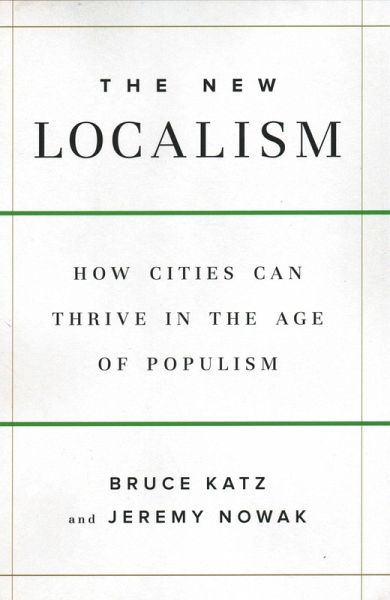
The New Localism
How Cities Can Thrive in the Age of Populism
Versandkostenfrei!
Versandfertig in über 4 Wochen
19,99 €
inkl. MwSt.
Weitere Ausgaben:

PAYBACK Punkte
10 °P sammeln!
"Power now belongs to the problem solvers" With the rise of the politics of rejectionism in the United States and much of Europe, how can communities solve the serious social, economic, and environmental challenges they face? The answer, according to urban experts Bruce Katz and Jeremy Nowak, lies within those cities and urban areas that have been on the cutting edge already, solving the problems of modern postindustrial societies by working to create new vehicles "to get things done." The authors define this power to make change the "New Localism." Power has moved downward, from the national ...
"Power now belongs to the problem solvers" With the rise of the politics of rejectionism in the United States and much of Europe, how can communities solve the serious social, economic, and environmental challenges they face? The answer, according to urban experts Bruce Katz and Jeremy Nowak, lies within those cities and urban areas that have been on the cutting edge already, solving the problems of modern postindustrial societies by working to create new vehicles "to get things done." The authors define this power to make change the "New Localism." Power has moved downward, from the national and state government to the city and metropolitan area. It has also moved horizontally, from the public sector to networks of public, private, and civic actors, and globally along circuits of capital, trade, and innovation. While the United States has struggled unsuccessfully, as a nation, with such systemic problems as rotting infrastructure and rising income inequality, cities in both "red" and "blue" states have found their own innovative solutions. Solving problems at the local level is not only more practical than wishing for national solutions, it can produce better results through a more democratic process. And public resources can be marshaled more efficiently when they are aligned with local market demands. The New Localism tells the stories of how Pittsburgh and Indianapolis in the American heartland and Copenhagen in Europe have taken the lead in dealing creatively with local problems. Chattanooga, Kansas City, Oklahoma City, and St. Louis are profiled as well, providing examples of successful innovation and entrepreneurship. The authors call for a twenty-first-century localism as demonstrated by these cities-one attuned to the needs of all citizens, including those in rural America. Out of these stories emerge new norms of growth, governance, and finance, and a path toward a more prosperous, sustainable, and inclusive society.













